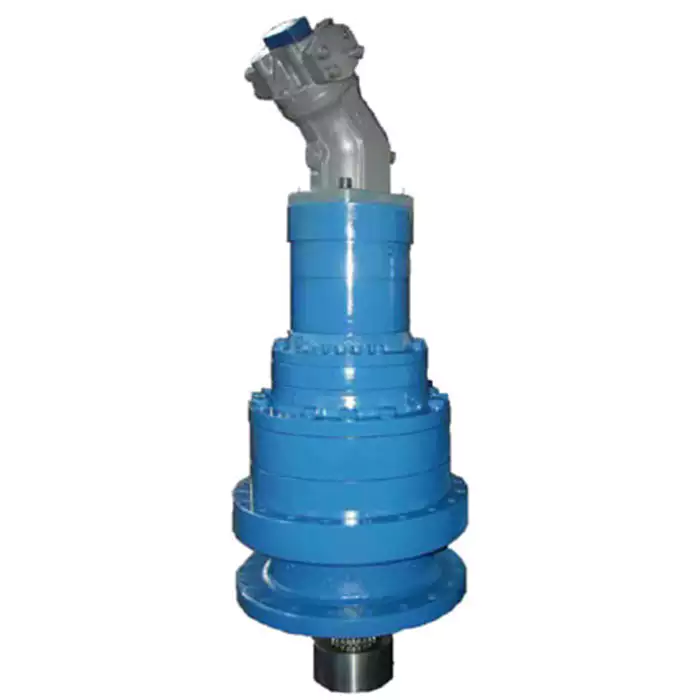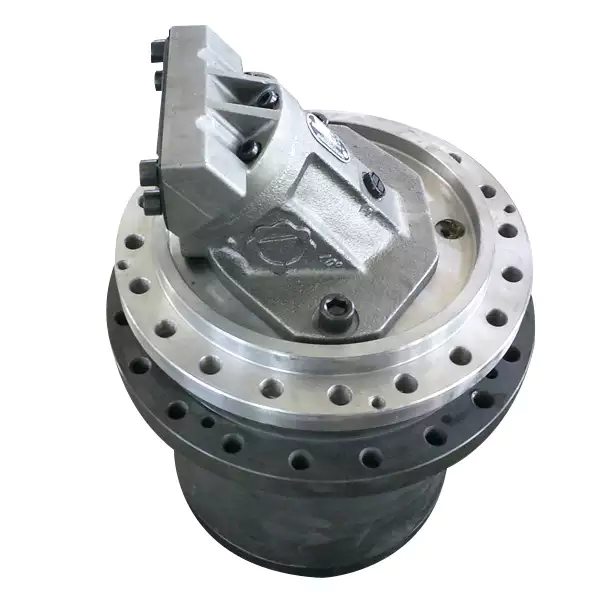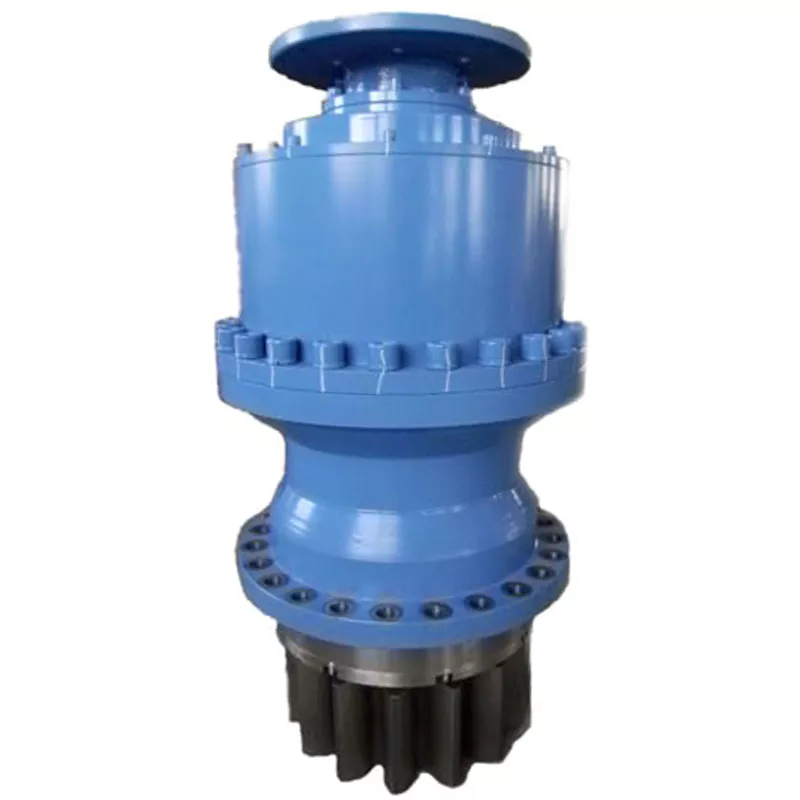Product Description
Product Description
ZHangZhoug New CZPT Hydraulic Co., Ltd. is a professional manufacturer of planetary reducers/gearbox. At present,we developed tens of thousands specifications of the planetary reducer/gearbox, travel drive,swing drive and winch drive.The ratio range is 3.3~9000, and the output torque range is 500~1200000N.m. The installation, dimensions and performance parameters of the reducer are exactly the same as famous European brands, which can be perfectly replaced and interchanged.
Details as follows:
BONFIGLIOLI (300 series, 700C series, 700T series, 600W series)
BREVINI (EM, ED, ET, EQ, EC, PD, PDA, CTD, CTU, SL types)
DINAMIC OIL (types RE, GB, RA, GBA)
REGGIANA RIDUTTORI (RR, RA type)
COMER (PG, PGA, PGR, PGW types)
REXROTH (GFT, GFT-W, GFB type)
ROSSI (R2E, R3E, R4E, RCE, RC2E, RC3E, MR2E, MR3E, MR4E, MRCE, MRC2E, MRC3E)
ZOLLERN (ZHP3.13, ZHP3.15, ZHP3.19, ZHP3.20, ZHP3.22, ZHP3.24, ZHP3.25, ZHP3.26, ZHP3.27, ZHP3.29, ZHP3.31, ZHP3.32)
FAIRFIELD, AUBURN GEAR, OMNI GEAR, O&K, etc. Therefore,our planetary reducer/gearbox can be used to replace the gearboxes of these brands.
| Bonfiglioli | Dinamic oil | Brevini | RR | ||
| 300 | RE110 | EM1571 | ED1571 | ET2571 | RR65/105 |
| 301 | RE210 | EM1030 | ED1030 | ET2030 | RR110/210 |
| 303 | RE240 | ED2030 | ET3030 | EQ4030 | RR310 |
| 304 | RE310 | ED2040 | ET3040 | EQ4040 | RR510 |
| 305 | RE510 | EM1045 | ED2045 | ET3045 | RR510/710 |
| 306 | RE810 | EM1046 | ED2046 | ET3046 | RR810 |
| EM1065 | ED2065 | ET3065 | |||
| 307 | RE1571 | EM1090 | ED2090 | ET3090 | RR1571 |
| RE1520 | |||||
| 309 | RE1520 | ED2150 | ET3150 | EQ4150 | RR1700 |
| 310 | RE2520 | ED2250 | ET3250 | EQ4250 | RR2700 |
| ED2320 | ET3320 | EQ4320 | |||
| 311 | RE3510 | SL3001,SL3002,SL3003,SL3004 | RR4000 | ||
| 313 | RE3511,RE3512,RE3513,RE3514 | SL4001,SL4002,SL4003,SL4004 | RR5000/RR5200 | ||
| 315 | RE6520 | SL6001,SL6002,SL6003,SL6004 SL8501,SL8502,SL8503 | RR6500 | ||
| 316 | GB11000 | SL12001,SL12002,SL12003,SL12004 | RR8000 | ||
| 317 | GB18000,GB21000, | SL18001,SL18002,SL18003 | RR10000 | ||
| 318 | GB26000 | SL25001,SL25002,SL25003,SL25004 | RR15000 | ||
| 319 | GB53000,GB53000 | SL35001,SL35002,SL35003,SL35004 | RR20000 | ||
| 320 | |||||
| 321 | GB61000 | ||||
300 Series Planetary Geabox Parameter
| Model |
Rated Output Torque (N.m) |
Max.Power (KW) |
Max.Input Speed (rpm) |
Ratio | |
| 301 | 1750 | 30 | 3000 | 3.4-2700 | 7-700 |
| 303 | 2500 | 40 | 3000 | 3.6-2800 | 9-800 |
| 305 | 5000 | 60 | 3000 | 3.6-2800 | 9-800 |
| 306 | 8500 | 75 | 2500 | 3.6-2900 | 9-800 |
| 307 | 12500 | 100 | 2500 | 3.4-2400 | 13-700 |
| 309 | 18500 | 130 |
2500 |
3.4-2400 | 13-700 |
| 310 | 25000 | 150 | 2000 | 4-2500 | 40-900 |
| 311 | 35000 | 180 | 2000 | 4-2100 | 18-800 |
| 313 | 50000 | 200 | 2000 | 4-2200 | 18-800 |
| 315 | 80000 | 250 | 1500 | 4-1800 | 70-900 |
| 316 | 105000 | 270 | 1500 | 4.4-1200 | 50-600 |
| 317 | 150000 | 300 | 1000 | 4-1900 | 70-900 |
| 318 | 200000 | 340 | 1000 | 4.4-1100 | 200-700 |
| 319 | 30000 | 380 | 500 | 4.8-1400 | 300-800 |
Office Environment
Our Equipment
Accessories for 300 Series
Certificate
Contact Us
How to contact us?
Nancy Zhang
Foreign Sales&Marketing Manager
HangZhou Kemer Engineering Machinery Co.,LTD
| Hardness: | Hardened Tooth Surface |
|---|---|
| Installation: | Horizontal Type |
| Layout: | Coaxial |
| Gear Shape: | Spur Gear |
| Step: | Three-Step |
| Type: | Planetary Gear Reducer |
| Customization: |
Available
| Customized Request |
|---|

Challenges in Achieving High Gear Ratios with Compactness in Planetary Gearboxes
Designing planetary gearboxes with high gear ratios while maintaining a compact form factor poses several challenges due to the intricate arrangement of gears and the need to balance various factors:
Space Constraints: Increasing the gear ratio typically requires adding more planetary stages, resulting in additional gears and components. However, limited available space can make it challenging to fit these additional components without compromising the compactness of the gearbox.
Efficiency: As the number of planetary stages increases to achieve higher gear ratios, there can be a trade-off in terms of efficiency. Additional gear meshings and friction losses can lead to decreased overall efficiency, impacting the gearbox’s performance.
Load Distribution: The distribution of loads across multiple stages becomes critical when designing high gear ratio planetary gearboxes. Proper load distribution ensures that each stage shares the load proportionally, preventing premature wear and ensuring reliable operation.
Bearing Arrangement: Accommodating multiple stages of planetary gears requires an effective bearing arrangement to support the rotating components. Improper bearing selection or arrangement can lead to increased friction, reduced efficiency, and potential failures.
Manufacturing Tolerances: Achieving high gear ratios demands tight manufacturing tolerances to ensure accurate gear tooth profiles and precise gear meshing. Any deviations can result in noise, vibration, and reduced performance.
Lubrication: Adequate lubrication becomes crucial in maintaining smooth operation and reducing friction as gear ratios increase. However, proper lubrication distribution across multiple stages can be challenging, impacting efficiency and longevity.
Noise and Vibration: The complexity of high gear ratio planetary gearboxes can lead to increased noise and vibration levels due to the higher number of gear meshing interactions. Managing noise and vibration becomes essential for ensuring acceptable performance and user comfort.
To address these challenges, engineers employ advanced design techniques, high-precision manufacturing processes, specialized materials, innovative bearing arrangements, and optimized lubrication strategies. Achieving the right balance between high gear ratios and compactness involves careful consideration of these factors to ensure the gearbox’s reliability, efficiency, and performance.

Maintenance Practices to Extend the Lifespan of Planetary Gearboxes
Proper maintenance is essential for ensuring the longevity and optimal performance of planetary gearboxes. Here are specific maintenance practices that can help extend the lifespan of planetary gearboxes:
1. Regular Inspections: Implement a schedule for routine visual inspections of the gearbox. Look for signs of wear, damage, oil leaks, and any abnormal conditions. Early detection of issues can prevent more significant problems.
2. Lubrication: Adequate lubrication is crucial for reducing friction and wear between gearbox components. Follow the manufacturer’s recommendations for lubricant type, viscosity, and change intervals. Ensure that the gearbox is properly lubricated to prevent premature wear.
3. Proper Installation: Ensure the gearbox is installed correctly, following the manufacturer’s guidelines and specifications. Proper alignment, torque settings, and clearances are critical to prevent misalignment-related wear and other issues.
4. Load Monitoring: Avoid overloading the gearbox beyond its designed capacity. Excessive loads can accelerate wear and reduce the gearbox’s lifespan. Regularly monitor the load conditions and ensure they are within the gearbox’s rated capacity.
5. Temperature Control: Maintain the operating temperature within the recommended range. Excessive heat can lead to accelerated wear and lubricant breakdown. Adequate ventilation and cooling measures may be necessary in high-temperature environments.
6. Seal and Gasket Inspection: Regularly check seals and gaskets for signs of leakage. Damaged seals can lead to lubricant loss and contamination, which can cause premature wear and gear damage.
7. Vibration Analysis: Use vibration analysis techniques to detect early signs of misalignment, imbalance, or other mechanical issues. Monitoring vibration levels can help identify problems before they lead to serious damage.
8. Preventive Maintenance: Establish a preventive maintenance program based on the gearbox’s operational conditions and usage. Perform scheduled maintenance tasks such as gear inspections, lubricant changes, and component replacements as needed.
9. Training and Documentation: Ensure that maintenance personnel are trained in proper gearbox maintenance procedures. Keep comprehensive records of maintenance activities, inspections, and repairs to track the gearbox’s condition and history.
10. Consult Manufacturer Guidelines: Always refer to the manufacturer’s maintenance and servicing guidelines specific to the gearbox model and application. Following these guidelines will help maintain warranty coverage and ensure best practices are followed.
By adhering to these maintenance practices, you can significantly extend the lifespan of your planetary gearbox, minimize downtime, and ensure reliable performance for your industrial machinery or application.

Challenges and Solutions for Managing Power Transmission Efficiency in Planetary Gearboxes
Managing power transmission efficiency in planetary gearboxes is crucial to ensure optimal performance and minimize energy losses. Several challenges and solutions are involved in maintaining high efficiency:
1. Gear Meshing Efficiency: The interaction between gears can lead to energy losses due to friction and meshing misalignment. To address this, manufacturers use precision manufacturing techniques to ensure accurate gear meshing and reduce friction. High-quality materials and surface treatments are also employed to minimize wear and friction.
2. Lubrication: Proper lubrication is essential to reduce friction and wear between gear surfaces. Using high-quality lubricants with the appropriate viscosity and additives can enhance power transmission efficiency. Regular maintenance and monitoring of lubrication levels are vital to prevent efficiency losses.
3. Bearing Efficiency: Bearings support the rotating elements of the gearbox and can contribute to energy losses if not properly designed or maintained. Choosing high-quality bearings and ensuring proper alignment and lubrication can mitigate efficiency losses in this area.
4. Bearing Preload: Incorrect bearing preload can lead to increased friction and efficiency losses. Precision assembly and proper adjustment of bearing preload are necessary to optimize power transmission efficiency.
5. Mechanical Losses: Various mechanical losses, such as windage and churning losses, can occur in planetary gearboxes. Designing gearboxes with streamlined shapes and efficient ventilation systems can reduce these losses and enhance overall efficiency.
6. Material Selection: Choosing appropriate materials with high strength and minimal wear characteristics is essential for reducing power losses due to material deformation and wear. Advanced materials and surface coatings can be employed to enhance efficiency.
7. Noise and Vibration: Excessive noise and vibration can indicate energy losses in the form of mechanical inefficiencies. Proper design and precise manufacturing techniques can help minimize noise and vibration, indicating better power transmission efficiency.
8. Efficiency Monitoring: Regular efficiency monitoring through testing and analysis allows engineers to identify potential issues and optimize gearbox performance. This proactive approach ensures that any efficiency losses are promptly addressed.
By addressing these challenges through careful design, material selection, manufacturing techniques, lubrication, and maintenance, engineers can manage power transmission efficiency in planetary gearboxes and achieve high-performance power transmission systems.


editor by CX 2023-10-25